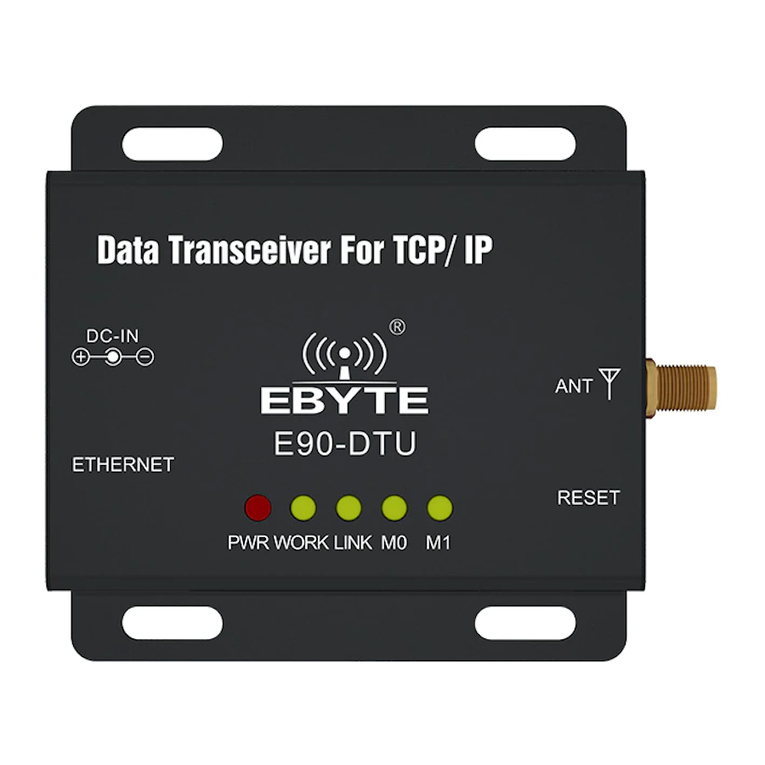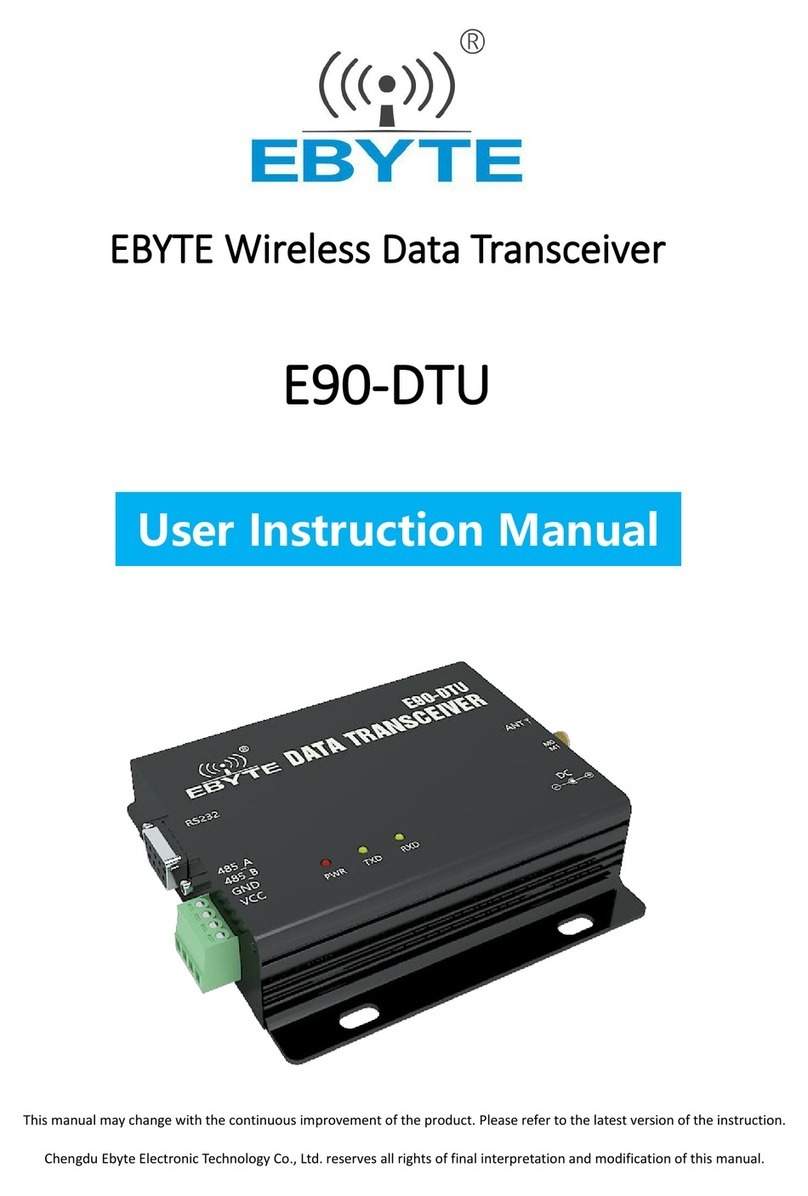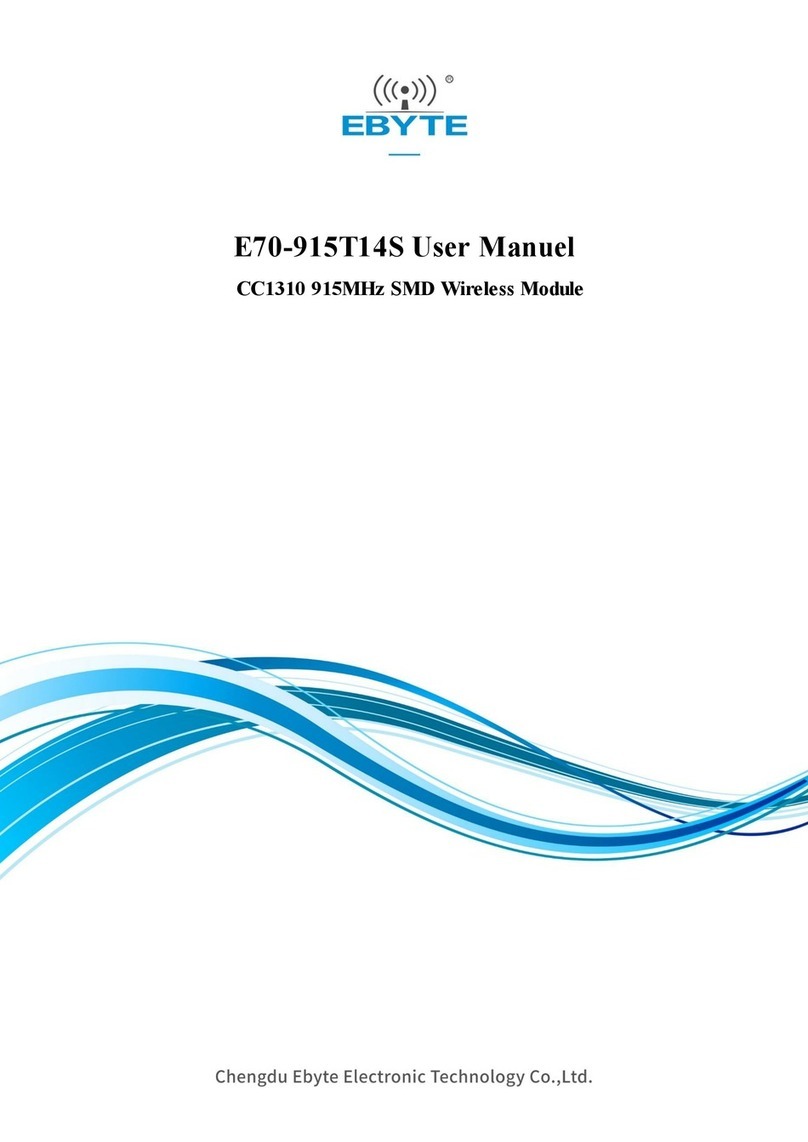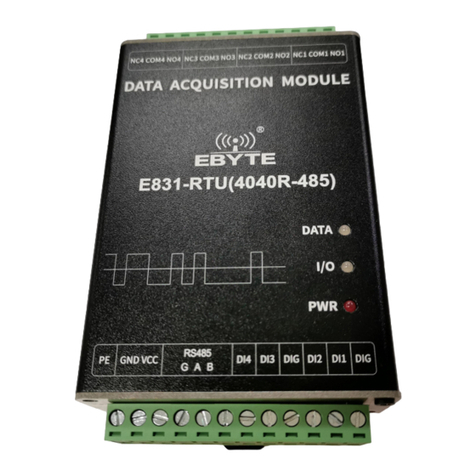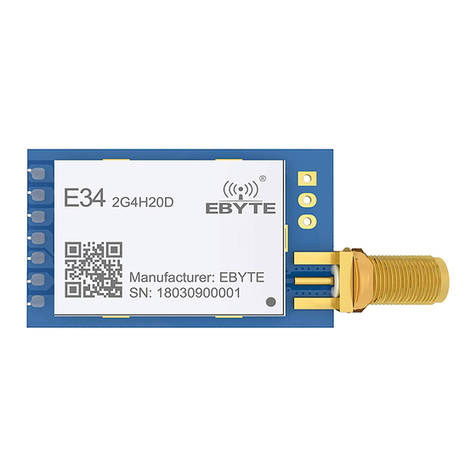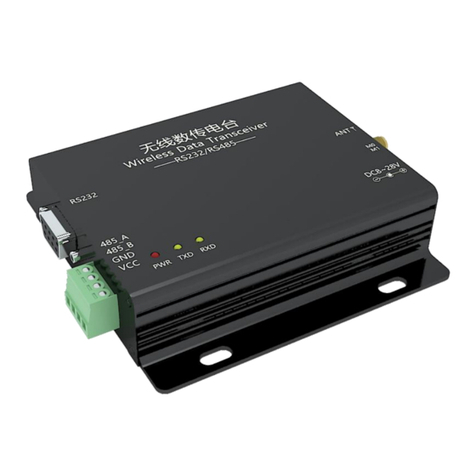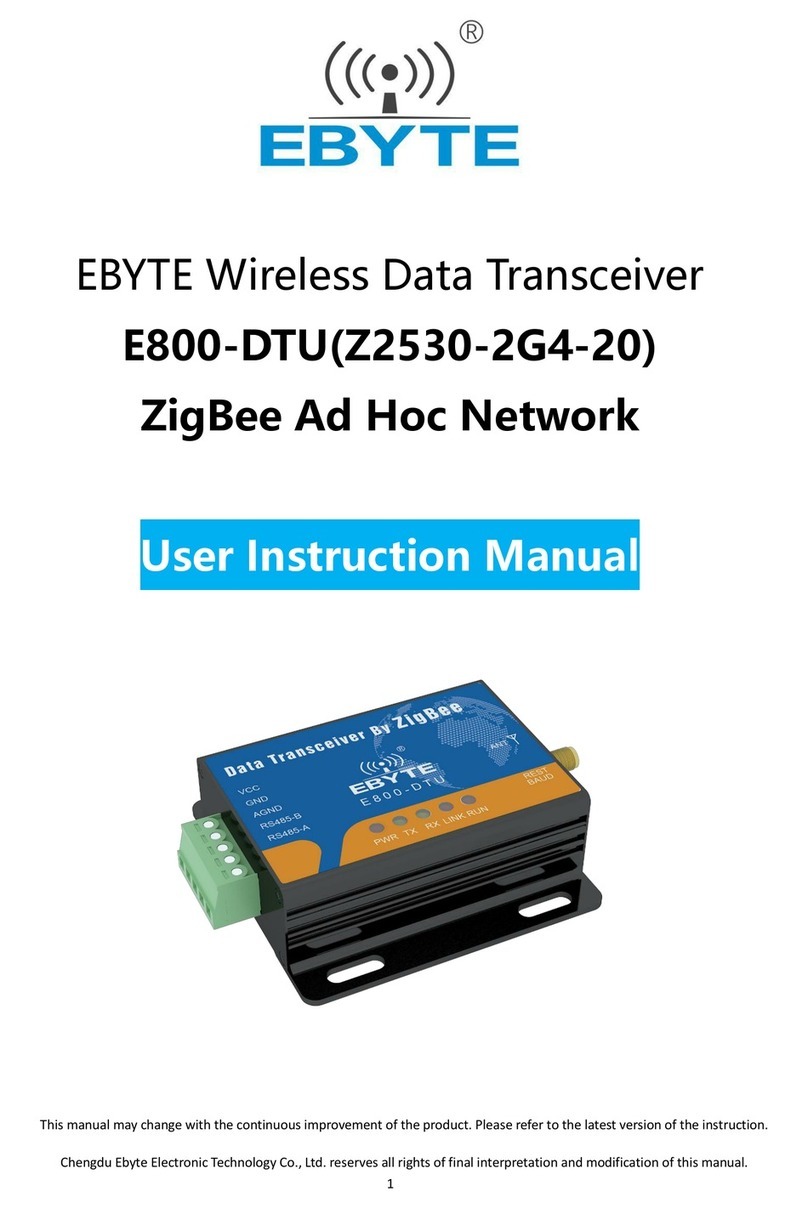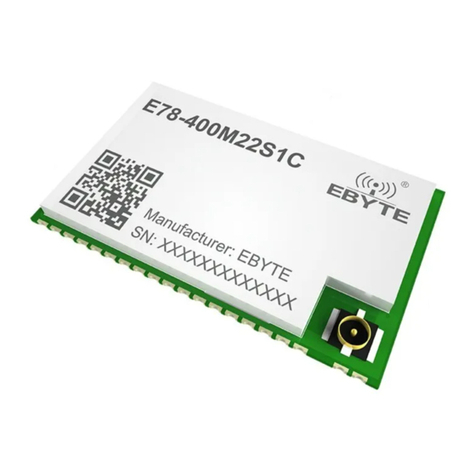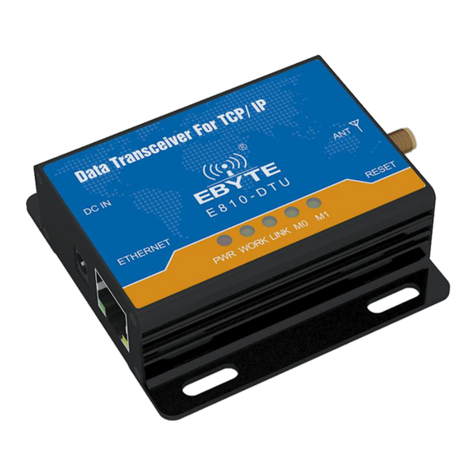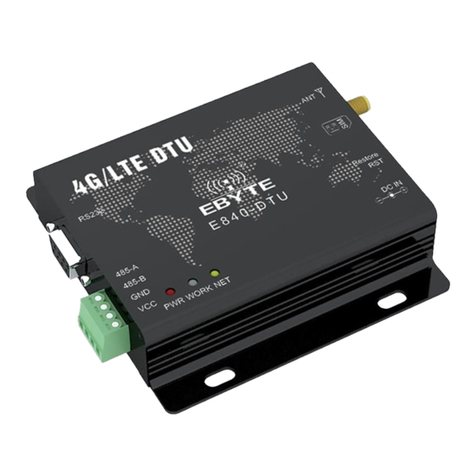
Chengdu Ebyte Electronic Technology Co,;Ltd E62-433T20D user manual
Copyright ©2012–2019,Chengdu Ebyte Electronic Technology Co,;Ltd 1
CONTENT
1. OVERVIEW.................................................................................................................................. 3
1.1 INTRODUCTION..............................................................................................................................................................3
1.2 FEATURES......................................................................................................................................................................3
2. SPECIFICATION AND PARAMETER..................................................................................... 4
2.1 LIMIT PARAMETER.........................................................................................................................................................4
2.2 OPERATING PARAMETER............................................................................................................................................... 4
3 SIZE AND PIN DEFINITION.........................................................................................................5
4 CONNECT TO MCU........................................................................................................................6
5 FUNCTION DESCRIPTION...........................................................................................................7
5.2.1 Indication of UART output....................................................................................................................................
7
5.2.2 Configuration procedure of module......................................................................................................................
7
5.6.4 Notes for AUX........................................................................................................................................................
8
6. OPERATING MODE...................................................................................................................... 8
6.2 TRANSMISSION MODE (MODE 0)................................................................................................................................... 9
6.3CONFIGURE MODE (MODE 1)....................................................................................................................................... 10
7.INSTRUCTION FORMAT............................................................................................................10
7.1 DEFAULT PARAMETER.................................................................................................................................................10
7.2 READING OPERATING PARAMETERS............................................................................................................................ 10
7.3 READING VERSION NUMBER........................................................................................................................................ 11
7.4 PARAMETER SETTING INSTRUCTION............................................................................................................................ 11
8. HARDWARE DESIGN.................................................................................................................14
9 FAQ..................................................................................................................................................15
9.1 COMMUNICATION RANGE IS TOO SHORT..................................................................................................................... 15
9.2 MODULE IS EASY TO DAMAGE.....................................................................................................................................15
9.3 BER (BIT ERROR RATE)IS HIGH................................................................................................................................ 15
10 PRODUCTION GUIDANCE...................................................................................................... 15
